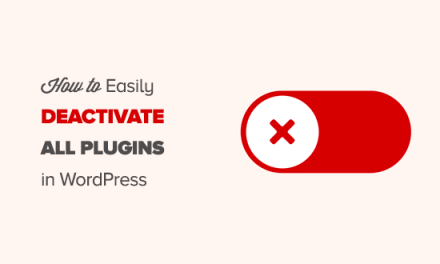Thinking of using WordPress for eCommerce? In this post, we show you what to look for, what you will need, and what to avoid.
WordPress is an all-round solution, offering so much more than a robust content management system (CMS). No longer just the choice for bloggers, you can now build a beautiful, responsive, and expertly functional eCommerce site for your business.
We’ve rounded up 8 must-haves to add eCommerce to your WordPress site and listed what’s trending in the industry. Read on to find out what you need to consider.
Must-Have #1… Dynamic Content
Running an online store is a highly competitive business. One way to make sure that your website stands out from the crowd is to think through the user experience and choose a theme that’s eye-catching but also functional. Drawing your customers in and making sure they can easily use your website is a sure route to more sales.
The following trends are great for creating dynamic content, and various themes and plugins will give you this functionality:
Interactive Content
Perhaps you could create an animation or illustration of the product that explains the features and benefits. For example, a sports t-shirt can look pretty on a model, but it won’t show you how the technology works when they go running. Let customers explore complementary items and visually build a set of products. For instance, if a customer goes to buy a tent, of course you’ll want to show them related products. However, if you let them drag-and-drop a groundsheet onto the visual, it’ll build up a camping picture.
A simpler way to add interaction to your store content is to use 360° imaging technology like webrotate360 for your product images.

Product Sliders
As the above animation shows, movement on a page catches the eye of your customer and decreases bounce rates. Animated slides can do this. Visitors will want to see what’s on the next slide, so they will stick around to see it or click through the slides. Sliders also give you the opportunity to display more than one promoted product. If your page is static, you’ll need to update your content more frequently to ensure returning customers don’t get bored with seeing the same thing.

Parallax Design
Websites that scroll while showing new panes of information are the current design trend. The look is very modern and shows all the information in one place. Customers don’t need to leave a page to view other information, which could result in the loss of a sale if they navigate away from a product. If you have a static background image with scrolling panes on top, it adds another dynamic to the design, as it appears like you’re moving the panes across the image. Again, this is useful for catching the attention of customers and making them want to see more. It makes interacting with your site or products more exciting.

Must-Have #2… eCommerce Plugins
By far, the quickest way to add eCommerce to your website is to use a plugin. Plugins add to the experience and certain plugins can take your site from a simple web presence to a full-fledged online shop or eCommerce behemoth.
Your eCommerce plugin needs to offer a payment gateway (PayPal is usually a standard payment option, as is Stripe) that works in different currencies, offers the choice of making payments using all the major credit card providers, plus the option to add tax and shipping costs.
You might have an existing WordPress site that you want to expand and sell products or services from, or you might plan to set up a brand new online store and build the site from scratch. Using WordPress to power your site with an eCommerce plugin that takes care of selling and payment processing is a great option, as this will give you an integrated, easy-to-use CMS that lets you blog and promote your store, products, special offers, etc. Plus you’ll be part of a friendly, supportive, and growing community.
So, which eCommerce plugin should you choose? Here are some options:
-
Marketing Your Online Store: HubSpot

HubSpot’s WordPress plugin is everything you need to organize, track, and nurture your leads and customers. And the best part is that it’s 100% free, forever.
HubSpot easily integrates with your eCommerce store, so you can sync your online store data into a CRM and use it to personalize and automate your marketing campaigns at scale. With this plugin, you can send emails to visitors who’ve abandoned their cart items on your site and nurture them back toward making a purchase. You can create smart CTAs in content, product specific re-engagement ads, and so much more. You’ll also have access to full funnel reporting, with data such as average order value or lifetime order value at your fingertips to build a brand and voice that will help you standout.
HubSpot’s plugin also integrates with Shopify, BigCommerce, and many other eCommerce platforms.
-
Popular eCommerce Plugin: WooCommerce

The WooCommerce plugin lets you set up a robust eCommerce site on WordPress with a polished admin interface, settings for configuring your eCommerce site, adding products, viewing reports dashboard, and top class support. WooCommerce also adds features like sidebar widgets to display top-rated products, recently viewed, and a price filter and lightboxes so that customers can view enlarged product images in a zoomable window without leaving the product page. Products can have ratings and reviews, giving your customers a sense of reassurance. WooCommerce also offers Gutenberg blocks and integrates with most WordPress themes, making it the eCommerce platform of choice for many WordPress developers.
WooCommerce is free, with many paid extensions (addons) available to add a range of exciting functionality and make your site into something even bigger. Free features include shipping and tax charge control; discount codes; order, product and inventory management; and a customer account area. Your sales reports are very detailed through WooCommerce, helping you keep track of individual product statistics and your overall store performance. Some of the many useful extensions you can add to your site include ways to plug into Google Analytics, so you can monitor your success, integration with social media, so customers can share products they like across their social channels, plus setting up custom invoices, subscription payments, currency conversion, and hundreds of additional enhancements.
-
A Quick Way to Start Up: WP eCommerce

WP eCommerce has all of the features you should want in an eCommerce plugin to sell anywhere and convert visitors into customers. WP eCommerce powers tens of thousands of stores around the world. It doesn’t offer as many addons as WooCommerce, but it is still one of the most relied upon open-source solutions for businesses, with a secure shopping cart, the ability to offer discount codes, set shipping costs. and different currency calculations. Drag-and-drop shopping makes a brilliant user experience for your customers. Also, you have many checkouts that you can integrate with, including PayPal, Stripe, Authorize.net, PayLeap, PayPal Pro, Braintree, eWay, Sage Pay, and more. The backend dashboard lets you easily check your sales and control your inventory.
The main advantage of WP eCommerce is that it integrates seamlessly with WordPress as this was the original WordPress eCommerce plugin, so its developers have history and familiarity with the WordPress platform. This also means it works well with WordPress themes and plugins, plus it has WordPress widget support and a very similar dashboard to avoid having to learn a new one. If you know your CSS and HTML, you’ll be able to customize your site within WP eCommerce.
-
Straightforward eCommerce: WP EasyCart

Another eCommerce solution to consider is WP EasyCart. This plugin is easy to install on your existing site and adds a straightforward shopping cart. You can sell a variety of products, both physical and digital, and play around with the settings to achieve the look you want. It is compatible with most themes and can be set up within minutes.
It comes with several widgets, menus, and more to manage features like store search, vertical and horizontal menus, price and manufacturer filters, categories, specials, and more. Other features include payment gateway integration, internationalization, advanced product settings (tiered pricing, B2B pricing, featured products, etc), live shipping, coupons, promotions, Google Analytics, social sharing, administrative software, and more.
WP EasyCart is also free.
-
Create An eStore For Digital Commerce With WP eStore

WP eStore is a WordPress shopping cart plugin that allows you to automate sales of digital content and digital downloads from your site and provide customers with a secure and hassle-free checkout experience. Buying, payment verification, and product delivery is all done without revealing the real URL of the product. You can also sell physical products with this plugin, as long as complex shipping options aren’t required.
eCommerce Platform Alternatives
We advocate WordPress as it’s so simple to use, has a plethora of themes and plugins to choose from, and an awesome and supportive community of passionate users and developers. Most WordPress eCommerce plugins are reasonably cheap to purchase, making the risk of starting up low and the likelihood of recouping your initial investment through sales sooner. And if you find that the plugin you’re using to power or enhance your online store is not giving you what you need, it’s easy to switch to other plugins (or even customize what you’ve got).
Similarly, if you have an existing WordPress site and want to branch out into selling online, you can easily add a plugin and start making money. You just need to make sure that the plugin integrates with your existing WordPress theme (which is the next must-have we discuss below).
Having said that, there are other options to build an eCommerce site from scratch. These include Magento, Shopify, and BigCommerce.
So, why do we suggest going with WordPress over these other options?
WordPress gives you a whole lot more control and ownership of your site (and did I mention that WordPress is 100% Free?), whereas other eCommerce platforms don’t give you ownership of your site, provide limited options, and can charge you monthly and transaction fees.
An alternative to consider is to download and use apps for other sites that integrate with your WordPress site. Let’s take a look at some of these alternatives:
-
Shopify

Shopify generates a buy button code you can copy and paste to add products to your WordPress site. Once you drop the Buy Button into place and choose the product you’d like to feature, a standalone mini-storefront is created on your WordPress blog or website that connects directly with Shopify’s secure shopping cart platform to display product images, details, and prices automatically. This can be a good option for those who already have an existing WordPress site and Shopify shop.
And the benefits of using Shopify? Many are similar to the WordPress plugins, such as a secure shopping cart, various payment gateways, controlling taxes and shipping, and the ability to use CSS and HTML to build and style your website to match your brand’s look. It also lets you choose from over 100 professional themes and present your shopping cart as mobile or tablet-ready.
-
BigCommerce

BigCommerce provides scalable headless commerce on WordPress via a plugin.
The plugin allows you to link to your BigCommerce account and display products with embedded store images within your WordPress site on the front-end while handing things like catalog management, processing payments, and managing fulfillment logistics on the back-end from BigCommerce.
This is a good option for a standalone eCommerce site if you’re not too familiar with CSS and HTML, as the plugin supports WordPress’ standard method of overriding template files so you can modify out-of-the-box designs, customize product cards, lists, and cart without risking plugin updates that will undo your changes. Big Commerce gives you full catalog access, allows you to choose a theme, and use the point and click design features to make it your own. It’s also got built-in marketing and SEO tools, so you don’t need to be an expert in this either. Your site will be securely hosted, PCI compliant, and you’ll get a CRM to communicate with your customers.
Must-Have #3… An eCommerce Theme
Choosing an established WordPress theme will allow you to build a professional-looking site quickly and without the associated cost of designing and developing an eCommerce site from scratch. You’ll also have a lot more control over your site, particularly if you have some CSS and HTML knowledge.
Because WordPress isn’t just an e-commerce platform, with a WordPress theme, you get all the ease and flexibility of a powerful CMS that lets you quickly add new posts and pages, plus rearrange your page layouts, add new features and functionality, and so much more.
Choosing the right WordPress theme is important, as there are many beautifully designed themes that aren’t built with eCommerce in mind. Having said this, there are many great eCommerce themes available for WordPress-powered online stores. Here are just some you may want to look at:
-
Elementor Page Builder

Elementor Page Builder is a free page builder plugin you can download from the free WordPress plugin directory and use to build high-end page designs with advanced capabilities for all kinds of websites, including eCommerce stores.
With over 3 million downloads, Elementor is a robust and stable mobile responsive theme builder, used by many WordPress theme developers as their foundation. It offers an easy interface that makes building pages faster using instant drag & drop, live edit, and page loads so you can see what your pages will look like as you edit. It also works with or without Gutenberg and comes with pre-designed templates, widgets, blocks, and many built-in features, including custom fonts, box shadows, background overlays, hover and headline effects, animations, shape dividers, gradient backgrounds, and much more.

An example of an eCommerce site built using Elementor. Additional features used by theme developers for creating eCommerce sites include a visual and intuitive form builder, marketing automation and CRM integrations, WooCommerce integration and more.
-
Elegant Themes

Elegant Themes is the home of DIVI, another popular WordPress visual page builder used by over half a million developers and business owners to build professional websites.
Divi is not just a WordPress theme, it’s also a website building framework with a WYSIWYG editor that lets design professionals and business owners easily create stunning site designs without touching code using drag & drop. Elegant themes built with DIVI are fully responsive, highly customizable, give you control over very fine details of your web design, and lets you combine custom CSS with the framework’s own visual design controls for unlimited design possibilities.
-
WooCommerce Storefront

With over 3.5 million downloads, WooCommerce Storefront themes are another highly popular choice for eCommerce themes. Storefront themes are built and maintained by WooCommerce core developers so they integrate well with WooCommerce and WooCommerce extensions, eliminating conflicts between the theme and plugins during major WooCommerce updates. Storefront themes are responsive and highly customizable, allowing you to match your brand and store using the WordPress customizer, a custom plugin, or a child theme.
Additionally, themes developed with Storefront have eCommerce-focused home pages, follow accessibility guidelines, and include built-in search engine optimization, WooCommerce integration, real-time editing and a WooCommerce Storefront extension catalog for additional features and functionality.
Must-Have #4… Ramped Up Security
Security is paramount for an eCommerce site, especially now that millions of people are shopping and transacting online. Your customers trust you to keep their payment details secure. Security is obviously important for them, and it can make or break your reputation, not to mention that it’s a legal requirement if you sell anything online.
Some WordPress plugins offer security as a feature, as payments are processed through them in the cloud. Otherwise, you’ll need to get an SSL certificate and make sure you’re PCI compliant. If you’re not sure how to proceed with this or you just want to get your shop up and running as quickly as possible, then choose an eCommerce plugin that will take all the hassle away.
-
Cart66 Cloud

Cart66’s connected cloud services eliminate the need to handle all PCI requirements yourself when setting up a secure eCommerce site and solves problems like payment security, SSL certificates and security scans, hooking up a business class SMTP server for sending email receipts, and securely storing and delivering digital products.
Cart66 includes a WordPress plugin that brings all of their secure connected services together, allowing you to get started quickly and add and sell products from any page or post. It also provides users with a built-in recurring billing engine for selling memberships, subscriptions, or physical products on a recurring basis, inventory management, Google Analytics for eCommerce, built-in product catalog with unlimited categories, built-in image gallery for products, and support for over 100 payment gateways.
If you’re just starting out, there’s a cost to using the service (plans range from $19-$49 per month), but everything is handled through the cloud and you benefit from their expertise in handling eCommerce security for you.
Additionally, don’t forget to choose secure hosting for your eCommerce site. WordPress is a safe and secure platform for eCommerce, but when it comes to the security of your business and your customers, you can never take enough precautions, so make and make sure to go through our ultimate security checklist for WordPress when setting up your eCommerce store.
Must-Have #5… Optimized Digital Downloads
Selling digital downloads or access to digital information products like video courses or ebooks can be a very lucrative business. If this is the type of business you plan to build instead of selling physical products, you may need a more specialized plugin (although most eCommerce plugins will work just fine with virtual downloads).
Options like being able to re-download a digital file and allow users to download multiple files are a must-have for a successful digital download store.
-
Easy Digital Downloads

This plugin is designed specifically for selling digital products. There are no other confusing options. Easy Digital Downloads is free to use with the option to buy extensions and themes.
EDD integrates with many kinds of services like email marketing, cloud storage, payment processors, and business productivity tools and is fully supported by an active community of developers. It also comes with built-in features like discount codes, full shopping cart, unlimited file downloads, file access control, download activity tracking, full data reporting, customer account page shortcode, and REST API. Just like the fuller eCommerce options, Easy Digital Downloads allows your customers to input discount codes and see their purchase history, download multiple files, purchase bundles, and re-download files. It also lets you see your sales log to manage your business effectively.
Must-Have #6… Leverage
Growing an eCommerce business involves coordinating many moving parts, including sales, marketing, and promotion. The key to getting ahead in this area is to create leverage.
Marketing Blog
Adding a marketing blog to your eCommerce site not only gives a friendly voice to what could otherwise be a faceless website, but it also gives you a dynamic and interactive presence. Your eCommerce store blog can include all kinds of useful content, from informal topics, such as what your staff have been up to or industry trends, to education and training for your products, how-to videos, before and after pictures and customer stories and testimonials.
Blogs are usually written, but you can also add videos, create imaginative infographics and pepper your writing with striking imagery. Blogs can also be used to be informative, such as providing how-to guides. What’s important about informative content is that it establishes you as an authority in the industry. Showcasing your knowledge about topics that are influenced by your products means you’ll become the go-to business to enquire about those products.



Regular Content
Whatever the topic, the important thing is to continually provide your customers (and potential customers) with valuable content. When someone visits your site, they don’t have to get hit with products and a hard sell. There are so many ways to provide users with additional value and give them something more that they can take away and remember you by. Users can share links from your blog with others if they find it useful, entertaining, or interesting. Sharing, as we all know, leads to more customers.
Content marketing is providing content of value that users can appreciate and share. It also keeps search engines happy. One tactic of SEO is to get your website linked to other websites. So if your blogs are shared, this will link them up—hopefully to websites that are getting high impressions and can refer you more traffic. Also, if you’re an active business constantly publishing and updating content on your site, Google will pick this up and push you higher up its rankings than static sites.
You can also easily integrate a WordPress blog with your social media networks and your eCommerce store (and a business directory, and a calendar of events with bookings and registrations, and a membership site, and an affiliate program, and, and, and…). All this leverage and interactivity allows your customers to get to know your business better and develop a relationship that will see them returning for repeat visits… even promote your site and products for you.
So, publish valuable stuff on your blog to maximize your leverage. Don’t just regurgitate what everyone else is saying. Plus, share your content on your own social media channels to encourage others to read and share it too.
Must-Have #7… Monitor Your Analytics
Most WordPress themes and eCommerce plugins integrate with reporting and analytic tools. Google Analytics is one of the best (and free) ways to find out what your customers are doing. You can track their journey across your site and see if there any stumbling blocks preventing them from making a purchase. Perhaps certain products are being clicked on but aren’t selling. Your next step from this information is to work out why.
-
KISSmetrics

Another option is KISSmetrics, which will take some of your budget, but you can get started with a 7-day free trial. It’s a popular choice for many websites – eCommerce or otherwise – and it’s easy to see why. The analytics tool allows you to deeply understand your customers. You can learn where your best customers come from and tell you who your repeat customers are. All you need to do is install the tracking code into your WordPress site and you’ll be all set to receive actionable insights. With KISSMetrics, you can import shopping history, segment customers, and follow them from first visit to purchase and beyond.
Must-Have #8… Social Media Integration
Think about the social media aspects of your marketing strategy. If customers see a product they like, they can share the link with friends and family hoping they’ll buy it for them. The very act of sharing a link online means that others will see it too, which can result in a new customer. Make sure that your plugin has built-in social media features or social media integration. Also, consider using a link shortener so that links shared by customers aren’t monster-sized.
-
Pinterest

Sharing visual content is incredibly easy through Pinterest via the PI button plugin. As Pinterest profiles are open, anyone searching for the products you sell could find you on Pinterest and come visit your site. 250 million people use Pinterest every month, so it’s a really powerful social media tool for eCommerce.
PI Button is a feature rich free Pinterest plugin that lets you add custom ‘Pin It’ buttons throughout your site and your customers can then pin your products to their own Pinterest boards. Shortcodes and widget options make it easier for users to share your content and give you flexibility and options for choosing which products you’d like to push.
-
Shareaholic

Another plugin that includes a ‘Pin it’ button for Pinterest as well as all the other major social media sites is Shareaholic. This plugin can be used on any WordPress site, not just eCommerce. It allows your customers to share what they find on your site with one click. It includes support for Facebook, Twitter, LinkedIn, Buffer, Google , Pinterest, and many more. The plugin is GDPR and Gutenberg enabled and uses smart short links that capture audience data metrics, which you can then use to launch retargeting campaigns using social media accounts, email campaigns, influencer campaigns, and more, analyze performance, and monitor the success of your shares through Google Analytics. The plugin lets you show related content on your site too, and you can display follow buttons to grow your own social media profile.
-
Share Buttons

A plugin to rival Shareaholic is Share Buttons. This plugin also lets your customers share what they see on your site with their network on social media and follow your social media profiles to drive more traffic and increase engagement. It works with over 100 sharing and social media sites & apps, including Facebook, Twitter, Pinterest, WhatsApp, LinkedIn, Tumblr, Reddit, WeChat, and more. Customers can also share pages via email. You get a variety of button placement options and counters that show how many times your pages or posts have been shared. This plugin integrates with Google Analytics to track performance of shared content and is optimized for WordPress, mobile devices and it’s retina-ready too, so it will look fantastic on Apple products.
-
Ecwid

This is an interesting little plugin that lets you add eCommerce to your Facebook, Instagram,and WordPress pages. It’s Gutenberg-friendly and works perfectly on mobile devices. Basically, it’s a shopping cart designed to fit any existing site. Once you’ve set up your products and checkout pages, it will automatically embed into your WordPress site, add an online store, and adjust itself to the page layout.
Ecwid supports dozens of languages, payment options, and real-time shipping integrations. It synchronizes data between WordPress and Facebook, so you can have two store fronts and access a huge volume of potential customers. If you want to expand further, you can mirror your shop on other platforms, like Google Shopping, and manage it all from one place. All of this is free but there are premium options if you have the budget to spare.
Other Must-Haves To Consider
As well as the must-haves listed above, here are some key things to consider and avoid when adding eCommerce to your WordPress site:
- Planning. Because WordPress gives users unlimited flexibility and seemingly infinite options, there is no one plugin or theme that will suit every business, so invest a little time into planning your eCommerce business and research your options before setting up your shop. Avoid diving right into building an eCommerce store without first planning and researching your options.
- Cost. If your eCommerce environment is built on a scalable platform, you can start inexpensively and add more things as your business grows and different functionality is required. A platform like WooCommerce, for example, offers a wide range of extensions, which you’ll have to pay for but it can give your customers a better user experience and help to improve your results. WordPress themes can also help you save money in areas like web design. Avoid getting locked into limited eCommerce platforms and solutions that may seem cheaper initially, but actually turn out to be more expensive when it’s time to expand.
- Support. Think about how confident you are with the backend of WordPress. If things go wrong, can you afford to have your shop offline for a few hours while you troubleshoot and figure things out? That’s where themes and plugins that provide solid support become vitally important in your business. Avoid using ‘free’ themes and plugins for your eCommerce business, unless these are regularly updated and fully supported, which can be challenging if the developers aren’t getting paid to improve or support these.
From Must-Haves To Must-Dos
Hopefully, now you know what to look for, what you will need to add eCommerce to your WordPress site, and what to avoid. If you’re just starting up an eCommerce business, you’ll be able to use the above information to build a more effective site or an online store from scratch.
There are so many options for setting up an online shop. The one thing we strongly advise is to go with WordPress and add everything your eCommerce store needs using plugins and themes. You will be part of a supportive and passionate community, plus have a dizzying array of new themes and plugins to constantly choose from.
The last thing you want to do when setting up a business online is to be stressed by the complexity of it all. WordPress is simple and flexible, plus there’s always support—paid and free through forums and our online WordPress tutorials—to help you out.
More businesses are realizing that having an effective online presence is the key to success (and for some, even necessary for their survival), so now is a great time to get on board and present your offering to the world through a fantastic WordPress eCommerce-enabled site.
If you need help getting started, see our comprehensive guide to planning an eCommerce store with WordPress and also make sure to check out these latest eCommerce trends.
1.6 million WordPress Superheroes read and trust our blog. Join them and get daily posts delivered to your inbox – free!
Tags:












